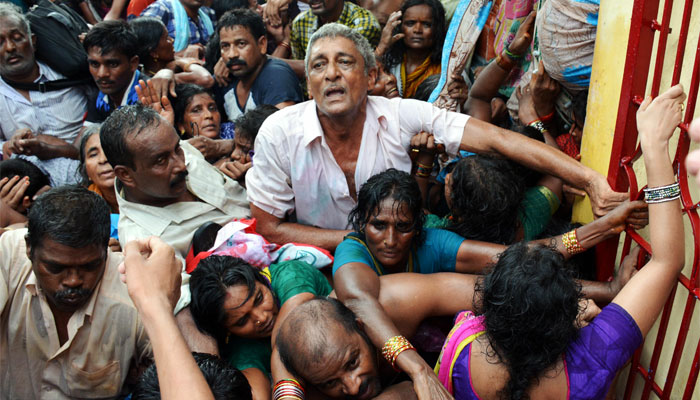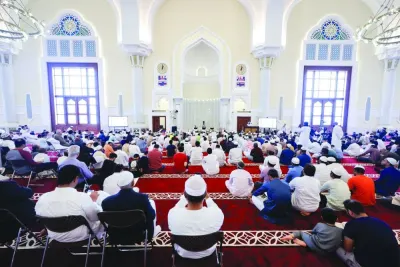Indian devotees gather after a stampede at a religious festival in Godavari in |
the Rajahmundry district some 200 kms north-east of Hyderabad. AFP
AFP/Godavari
A stampede on the banks of a holy river killed at least 27 pilgrims Tuesday in southern India, signalling a tragic beginning to a religious festival season, officials said.
The stampede broke out at around 8:00 am (0230 GMT) in Rajahmundry, on the border of the twin states of Andhra Pradesh and Telangana, about two hours after the start of the Maha Pushkaralu festival which sees thousands of people bathe in the waters of the Godavari river.
"Twenty-seven people have now been confirmed dead in the stampede and another 29 are injured," a spokesman for Andhra Pradesh's Chief Minister Chandrababu Naidu said after police earlier put the number of dead at five.
"At least two of the 29 injured are critical," the spokesman Parakala Prabhakar told AFP.
While the identities of all the victims had yet to become clear, a senior police officer said the dead included at least four women and a 15-year-old girl.
"The incident happened as the first set of worshippers were coming out of the river after taking a dip and then got in the way of others who wanted to be in the water at an auspicious time," A. Srinivasan Rao, a deputy superintendent of police in Andhra Pradesh, told AFP.
In a statement posted on his official Twitter account, Prime Minster Narendra Modi said he was "deeply pained at the loss of lives due to stampede at Rajahmundry" and offered condolences to the families of victims, as well as prayers for survivors.
The chief minister's spokesman Prabhakar said that an ex-gratia compensation payment of one million rupees (around $15,750) had already been approved for victims of the stampede and the state government would bear the full medical costs of the injured.
The start of the Maha Pushkaralu festival coincides with the official beginning of the much larger Kumbh Mela festival, which is being held at Nashik in the western state of Maharashtra.
Millions of pilgrims are expected to travel to Nashik over the next two months, the site of a stampede in which 39 people were killed when the Kumbh was last held there 12 years ago.
Only a few hundred people attended a flag-raising ceremony on Tuesday which marked the official opening of the 2015 festival and mass crowds are not expected to gather until the first main bathing day on August 29.
Organisers expect up to ten million pilgrims to attend the main Kumbh Mela bathing dates, which fall on August 29, September 13 and September 18, and 20,000 police are being deployed to man the crowds.
Routes to the river have been changed to avoid steep slopes and overcrowding, while a temporary intensive care unit has been set up to deal urgently with any injured.
The dates for the Kumbh Mela and the Pushkaralu festivals are set by religious leaders to coincide with the most auspicious days in the Hindu calendar.



